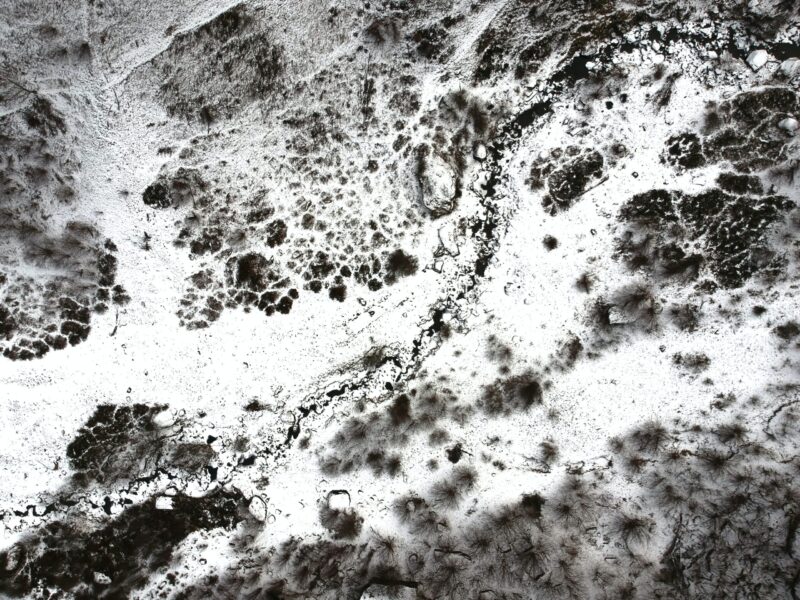
30 Aug What Causes Black Mold?
While it holds a reputation as the most deadly type of mold, black mold is actually no more harmful than any other variants. The CDC recommends that all molds be treated as hazards and removed in a timely manner. The experts at Pure Maintenance NE can ensure that any mold in your home or office gets removed safely. Here’s more about what causes black mold and how you can get rid of black mold.
What Causes Black Mold?
Black mold, or Stachybotrys chartarum, can grow wherever there is constant moisture. It’s commonly found on and inside materials with high cellulose content. Cellulose is an insoluble substance that is found in paper, wood, and fabric.
Black mold is most likely to appear in areas of the home, indoors and outdoors, that are humid. It can enter your home through places where air ventilates, such as windows and doors. Mold spores from outside sources can cling to fabric, shoes, pets, etc., and enter the home through indirect contact.
Basements, roofs, pipes, walls, and any areas of potential flooding are also places to watch for mold growth due to moisture. Prone to leaks and damage, these spaces are hotspots for mold. Other materials such as wallpaper, insulation materials, drywall, and upholstery commonly support mold growth due to their porous structure.
Mold Types and Symptoms
There are three different types of mold: allergenic, pathogenic, and toxigenic. Allergenic mold produces allergy-like symptoms. Pathogenic mold is harmful to those with preexisting conditions, and toxic mold produces acute illness.
About a quarter of the population is vulnerable to mold allergies, so it’s important to take notice of your body’s reactions in your home or office, especially in areas prone to water damage. Symptoms of mold allergies include:
- Sneezing
- Runny or stuffy nose
- Cough and postnasal drip
- Itchy eyes, nose and throat
- Watery eyes
- Dry, scaly skin
Mold Removal in NE
At Pure Maintenance NE, we know what causes black mold and how to get rid of it. We provide highly efficient, cost-effective alternatives to traditional mold remediation. Our demolition-free, patented dry fog technology is guaranteed to remove mold—black or otherwise—from your home or office. This safe and effective remediation method works in just a few hours and lasts a long time. Contact us today for a free inspection!




Pingback:Can Mold in Basement Affect Upstairs? | Pure Maintenance NE
Posted at 20:18h, 17 September[…] they create the perfect breeding ground for mold. The most common type of basement mold is black mold. Also known as Stachybotrys chartarum, black mold thrives in areas with consistent moisture. It […]
Pingback:Warning Signs of Mold In Your House | Pure Maintenance NE
Posted at 20:15h, 02 November[…] Because mold often lives and grows where it’s hard to find—like in dark basements, inside walls, and along water pipes—you may experience its side effects before you see any mold. This is especially true when it comes to recognizing signs of black mold. […]
Pingback:Mold vs Mildew: Is There a Difference? | Pure Maintenance NE
Posted at 17:49h, 03 December[…] it’s not as dangerous as black mold, mildew can still affect your health. Extended exposure to mildew can cause the same type of […]
Pingback:How Mold Exposure Can Impact Your Eyes | Pure Maintenance NE
Posted at 13:08h, 09 December[…] mold spores—can enter the front area of your eye, called the cornea. Toxic molds, such as black mold, have mycotoxins that damage eye cells and cause irritation, eye infections, and even disease. […]
Pingback:5 Ways to Prevent Mold in Your Bathroom | Pure Maintenance NE
Posted at 15:35h, 16 December[…] helps remove moisture, it also cools down the temperature in the bathroom. Mold—especially toxic black mold—loves to be warm, so cooling down the bathroom can help keep mold at bay. For extra protection, […]
Pingback:How to Kick Mold Out of Your Kitchen | Pure Maintenance NE
Posted at 16:59h, 14 February[…] Kitchen sink mold is very common—when you’re washing dishes, water splashes up on surfaces around the sink. If you do not dry off those areas, the moisture sits and mold can grow. And, if your kitchen sink has a slight leak or lingering condensation on its pipes, the combination of water and darkness under the sink can trigger mold growth, including toxic black mold. […]
Pingback:Does Sunlight Kill Mold? | Pure Maintenance NE
Posted at 11:47h, 23 March[…] to die. Because of UV light’s disinfection capabilities, it is also able to kill mold, including harmful black mold and […]
Pingback:Do My Houseplants Have Mold? | Pure Maintenance NE
Posted at 12:30h, 29 March[…] good news is that plant mold is not toxic like black mold. However, it can still affect people prone to mold allergies, and it can harm your houseplants, so […]
Pingback:Can Mold on Your Clothes Spread? | Pure Maintenance NE
Posted at 12:54h, 10 May[…] you put away in a plastic bag, mold can definitely grow on clothing. Many types of mold, including toxic black mold, can grow on clothing in the right conditions, and that is certainly not something you want to […]
Pingback:Should You Get a Mold Inspection When Buying a Home? | Pure Maintenance NE
Posted at 16:52h, 16 May[…] it or not, it is legal to sell a house with mold, even if it has toxic black mold. However, if the home seller knows there is mold in the home, they need to be upfront about it, and […]
Pingback:Can Mold Grow in My Pool? | Pure Maintenance NE
Posted at 11:55h, 25 July[…] addition to mold in the water, toxic black mold can also grow in your swimming pool. Sometimes referred to as black algae, it is identifiable as […]